
Lot 32
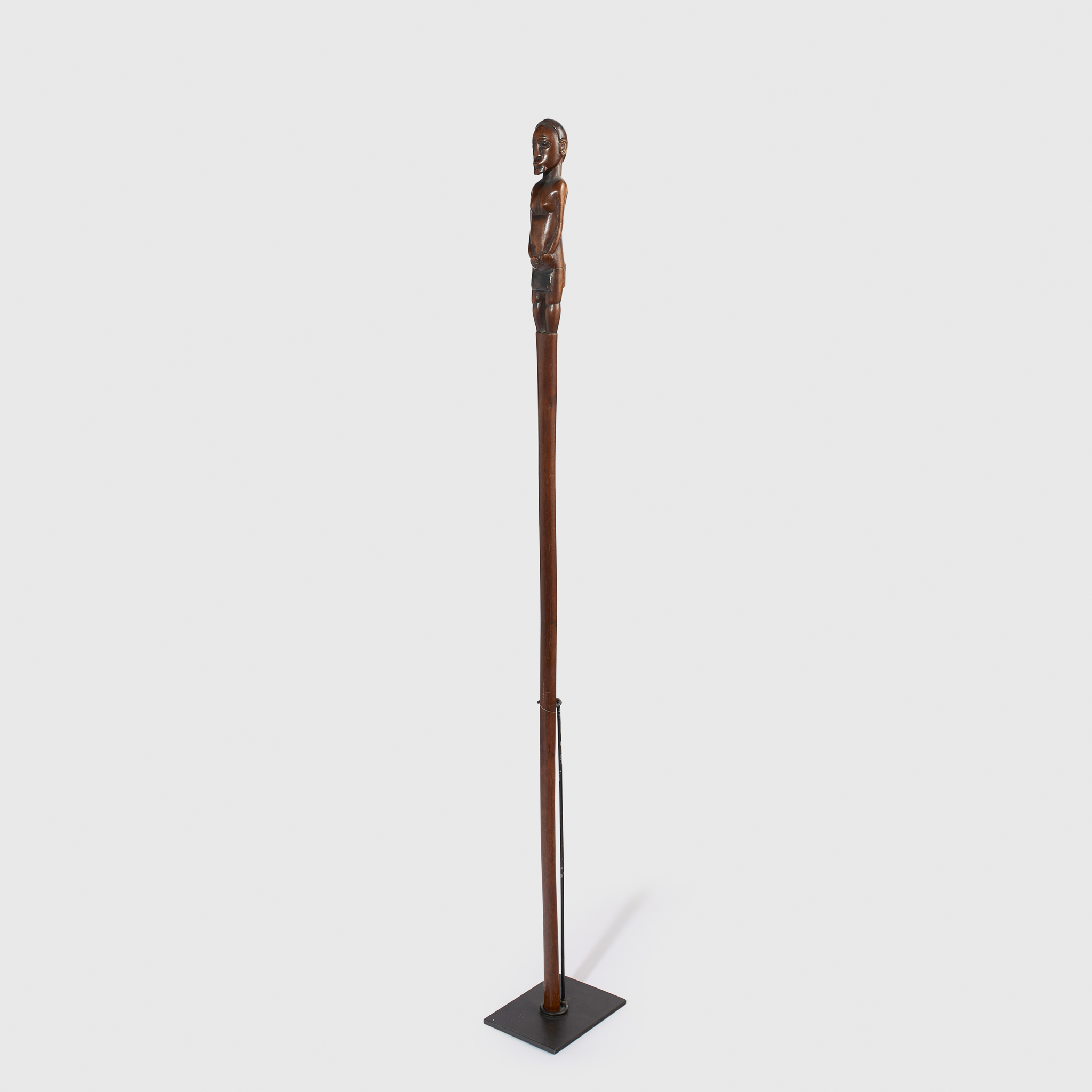
TSONGA STAFF
19TH CENTURY, SOUTH AFRICA
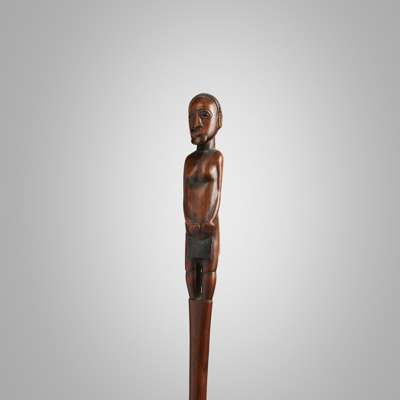
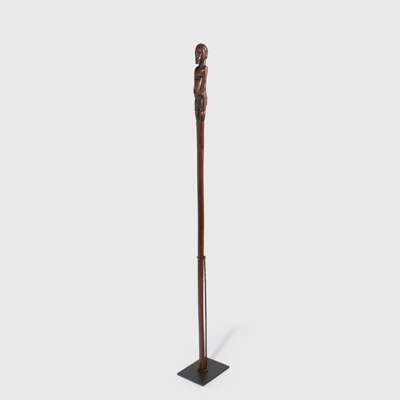
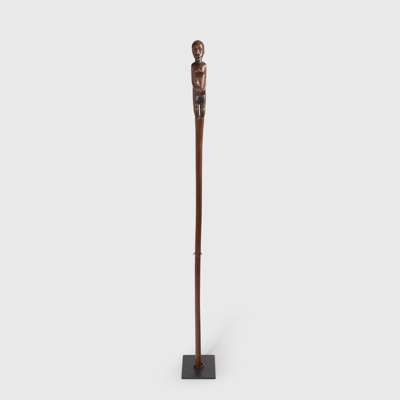




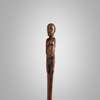
Auction: 13 March 2025 from 13:00 GMT
Description
carved wood, the long staff leading to a finial in the form of an ageing man wearing an apron and holding his arms towards the midriff, the figure rendered with fleshy stomach, rotund legs, and full beard
Dimensions
69cm long
Provenance
Tony Prout Collection, United Kingdom
Bernice and Terry Pethica Collection, United Kingdom
Published:
Conru, Southeast African and Oceanic Art (2005), n° 8
Klopper, Nettleton and Pethica, The Art of Southern Africa, The Terence Pethica Collection (2007), n° 21
Footnote
"Western notions of the artist are informed by the idea of the isolated genius, even though most were trained and worked in workshops until the nineteenth century. In Africa most artists carved in workshop contexts in which they shared styles, techniques and iconographies. The finials of staffs like these are sufficiently similar to allow us to postulate that there were at least one or two workshops training carvers in later nineteenth and early twentieth centuries in the Pietermaritzburg area of contemporary KwaZulu-Natal. It is not clear how these carvers marketed their works or to what extent they catered for an indigenous market. One clue may be the presence or absence of iconographic details like head rings. This particular finial figure is a remarkably individualised personification of an aging man. Details like the fleshy breasts, protruding stomach, rotund legs and beard draw attention to the passage of time rather than the idea of status. The master carver who produced works like these seems to have had an interest in conveying aspects of the emotional state of the subject, which in this case is reinforced by the slightly awkward, asymmetrical placement of the hands. Although it is commonly assumed that all figurative staffs were prestige items reserved for chiefs and royalty, writing in 1862, Robert Mann, the Director of Educational Services in Natal, recorded the use of staffs among young dandies, describing them as being of a jimmy character (Mann 1862: 20)." (Klopper, Nettleton and Pethica 2007).







